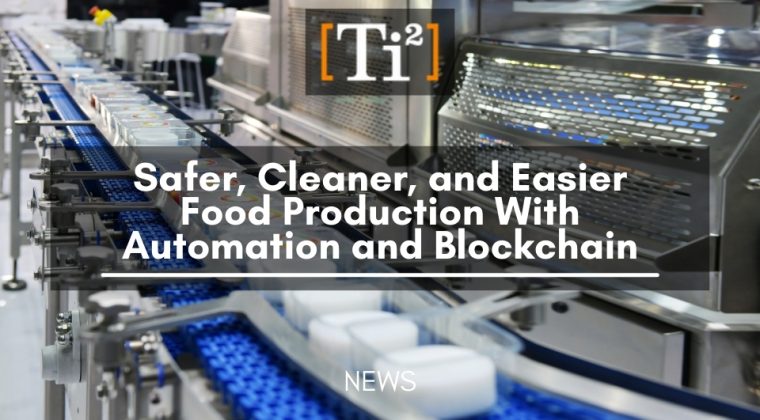
Food processing and production require extensive hygiene and efficiency standards. The use of automated equipment has been normalized as food production processes are easier to standardize with automation. A repetitive cycle is created for every single product with precise machinery speed and accuracy, something that is evidently difficult for humans.
A term you may hear often is RPA or robotic process automation. This is common in the food industry and known to help reduce long-term costs. It frees the human’s time to focus more on decision-making tasks and quality supervising which are deemed more valuable.
ROBOTICS IN FOOD PRODUCTION
Hygiene robots are mainly used in food or cosmetic production, handling, packaging, stacking, manufacturing, etc.
With growing global supply chains, food safety is a top concern for both consumers and regulators, according to Openlink. The World Health Organization (WHO) estimates that 420,000 people die annually from food contamination, which affects one in 10 people worldwide. Children under age five are at the highest risk with 125,000 children dying every year from foodborne illness, according to WHO.
As food production and manufacturing strive hard to up-keep food safety and hygiene, some important robotics are commonly used to reduce tedious workloads such as:
- Picking up and placing food objects
- Cutting or slicing
- Robotic dispensing for decoration
- Automated sorting or filtering
It’s important to have a food-compatible lubricant to clean the robots. And the robots must have smooth edges, axes, and arms with traits such as corrosion-resistant, disinfectant, and cleaning food-grade chemical resistant as well as waterproof.
TRACK AND TRACE: BLOCKCHAIN, SOFTWARE, AND SYSTEM
What happens after a production process? Revenue doesn’t flow in until products meet customers’ demands. This is where delivery and tracking are considered crucial. Large superfood markets require technology that will provide value chain players’ top ability to meet market expectations, not only with safety and hygiene but also sustainability and efficiency.
With blockchain as a ‘ledger’ system, food tracking is made possible with stronger security and traceability. Developed by Security Matters (SMX), sources say that blockchain is now being used to keep track of organic oysters.
With a tracking technique that involves connecting the physical product and the digital database system, the organic oysters are marked with an invisible, food-grade marker during the cleaning and processing stage. This invisible mark will identify their geographical origin, linking them to the blockchain. With this technology, you can even get a long-term digital receipt of who and where the oysters were bought/sold.
With blockchain, it’s almost impossible to change or cheat the system. Real-time, digital information, all supervised through one or more channels.
Aside from that, a more conventional way of tracking through label identification is still widely used in food and cosmetic manufacturing. Label identification, with the right automated inventory management tool, can reduce cost, time, and resources while tracking and tracing batches and individual items. Several main objectives for tracking and tracing are to ensure safety compliances as well as quality control.
Accurate labeling and tracking data will save you big time once a situation in which possible contamination or mislabeling arises. Let’s take a case, for example, a company conducts a special safety precaution and withdraws certain products due to contamination, instead of taking back all their production line, they can simply track the contaminated batch and call out the specific batch of product for isolation.
Several other food safety measures may include tracing perishable products and checking how long it’s been in the supply chain. Once products are overdue or expired, removing them from the distribution chain will be easier with a tracking system.
To learn more about what we do and how we can help your process automation requirements, please click projects, products & services.
Ti2 is currently very focused on working with its global partners to secure stock and avoid long delay times in delivering products to their customers. Together with our trusted partners, we are here to provide solutions.
Please click here to email us your inquiry, we would like to hear from you.
Article inspired from WDS, SMX, WHO, openlink and automate.
